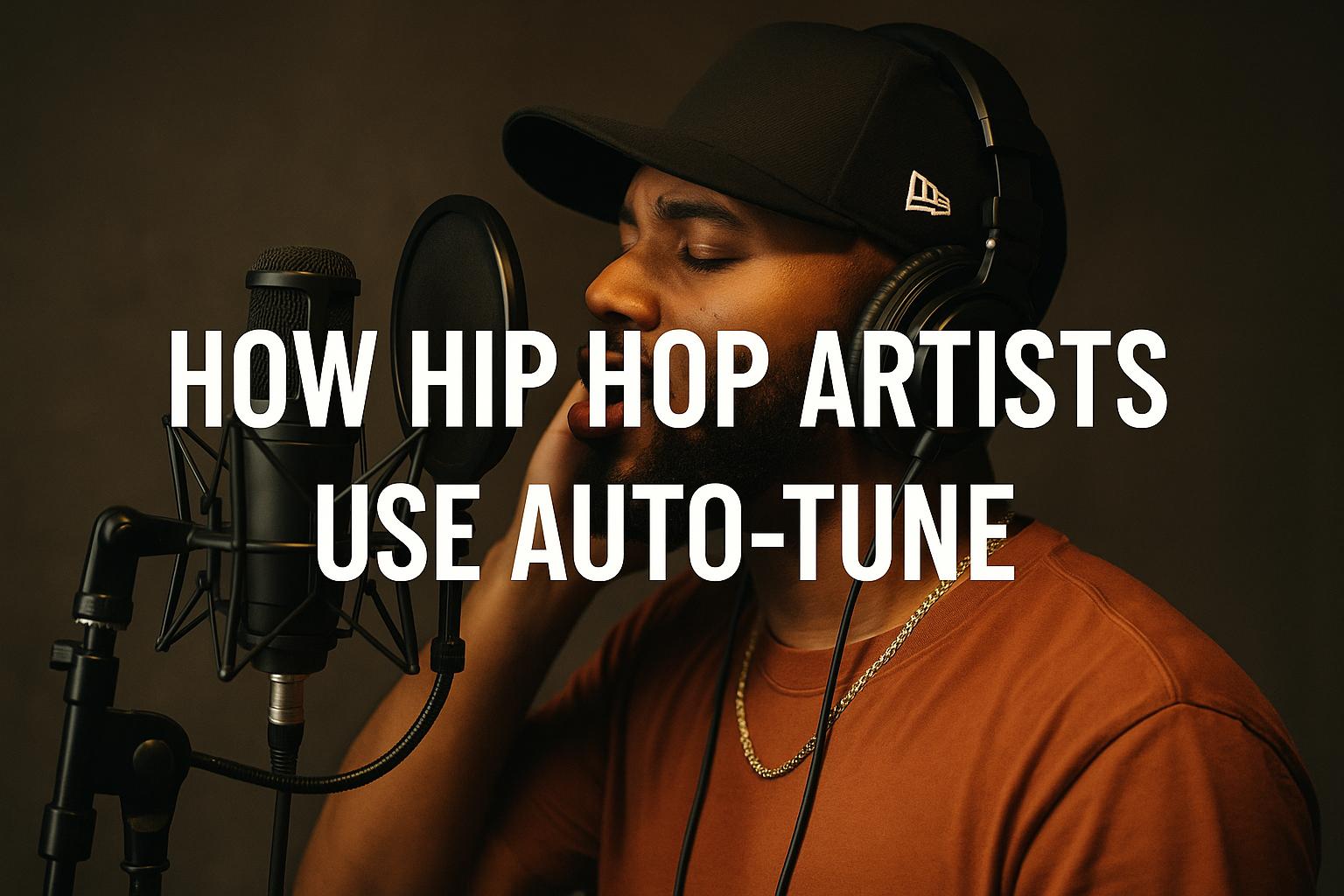Understanding Auto-Tune in Hip Hop
The use of Auto-Tune in hip hop music has become a common practice among artists seeking to enhance or alter their vocal performances. Originally developed by engineer Andy Hildebrand in 1997, Auto-Tune is a pitch correction software that allows artists to maintain a desired level of vocal pitch consistency. This tool has significantly shaped modern music, including the hip hop genre.
How Auto-Tune Works
Auto-Tune software analyzes and adjusts the pitch of any audio signal in real-time. When applied to vocals, it corrects off-key inaccuracies by bringing the pitch to the closest correct semitone. This process can produce subtle enhancements or lead to a more robotic or electronic vocal effect, depending on the intensity of the settings.
The underlying technology of Auto-Tune is based on phase vocoder algorithms, which can effectively manipulate the pitch of the audio without changing its tempo. By adjusting the formants and harmonics, Auto-Tune provides a seamless transition between notes and stabilizes the melodic integrity of a track. The software’s ability to perform these adjustments in real-time has made it indispensable in both live performances and studio recordings.
Reasons for Using Auto-Tune
There are several reasons why hip hop artists incorporate Auto-Tune into their music:
Artistic Expression: Auto-Tune enables artists to explore new soundscapes and vocal effects. By modifying the natural pitch of their voice, musicians can create unique auditory experiences that align with their artistic vision. This technological capability has opened new realms of audio creativity, allowing artists to experiment with different genres, fusions, and novel approaches to music composition.
Pitch Correction: Artists who might not have traditionally strong singing voices use Auto-Tune to ensure accurate pitch performance, thus improving the overall quality of their music. The pitch correction capability serves as an equalizer, allowing artists to focus on innovative lyricism and emotive delivery without the pressure of achieving perfect pitch naturally.
Trend Influence: With pioneers like T-Pain and Kanye West popularizing the use of this tool in hip hop, it has become a stylistic choice that aligns with current trends within the music industry. The ubiquitous presence of Auto-Tune across diverse music formats emphasizes a significant cultural shift, where digital enhancements become integral to music production and consumption.
Pioneers and Influencers
T-Pain is often credited with revolutionizing the use of Auto-Tune in hip hop. His 2005 debut album, “Rappa Ternt Sanga,” featured extensive use of the software, demonstrating its potential as a creative tool rather than just a corrective measure. T-Pain’s experimental use of Auto-Tune led to a signature sound that redefined mainstream hip hop and influenced countless artists thereafter.
Following T-Pain’s lead, Kanye West also embraced Auto-Tune in his 2008 album “808s & Heartbreak,” using it to express complex emotions and create an innovative sound. His narrative-driven approach combined with autotuned vocals elevated the emotional depth of his tracks, facilitating a new era of expressive hip hop.
Subsequently, artists such as Future have utilized Auto-Tune, each applying their distinctive interpretation, contributing to its widespread acceptance and continued evolution in the genre. Future, for instance, used the tool to emphasize mood and atmosphere in his music, crafting a sound that resonates with themes of modernity and futurism.
Cultural and Critical Perspectives
Auto-Tune has attracted both praise and criticism. On the one hand, it allows for innovation and experimentation in sound. It has encouraged a democratization of music production, making high-quality vocal performances accessible to a broader range of artists, regardless of their natural vocal abilities.
On the other hand, some critics argue that it diminishes the authenticity of the music. Over-reliance on Auto-Tune might overshadow natural talent, leading to a homogenized soundscape that prioritizes technological enhancement over genuine vocal prowess. This has sparked debates on the integrity of music authenticity and whether technology should play such a pivotal role in artistic expression.
Despite these debates, it remains an influential element in the contemporary hip hop landscape. The evolving sound of hip hop, significantly shaped by Auto-Tune, reflects larger technological and cultural narratives. It highlights ongoing discussions about the intersection of technology and artistry and the challenges and opportunities presented by digital innovation.
Conclusion
The integration of Auto-Tune in hip hop reflects broader trends in music production towards digital enhancement and experimentation. While opinions on its use may vary, its impact on hip hop is undeniable, offering artists new avenues for creativity and expression. As technology continues to advance, it is evident that the role of Auto-Tune in shaping the future of music will only grow.
Auto-Tune’s prevalence demonstrates the dynamic interplay between technology and culture, illustrating a transformative period in musical history where innovation and tradition coalesce. With its expanding role, Auto-Tune continues to push the boundaries of what is sonically possible, inviting both admiration and scrutiny as it charts a course for the next generation of music creators.
As the music landscape continues to evolve, the influence of Auto-Tune on hip hop signifies a larger trend of embracing technological potential. Its journey from a vocal correction tool to a fundamental element of hip hop showcases the adaptability of the genre and its openness to new influences and transformations.


